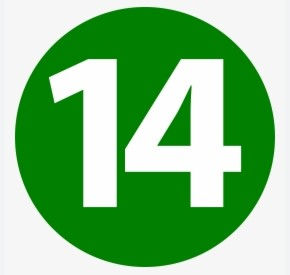Welcome to day 3 of the APSI 2023 in chemistry. Here are the top takeaways from today’s session.

1. In a buffer system, the weak acid is the Big Dog, and conjugate base is the Little Dog. It’s the Big Dog’s yard. And when new species are introduced they will either interact with the Big Dog or the Little Dog. I believe this terminology will help students recognize which way Le Chatelier’s principle will shift to minimize the stress. They always get confused messing around with the hydronium ion which is in very small concentration.
2. The AP test does not mathematically assess the resulting pH after an acid or base is added to a buffered system. It is only qualitative data.
3. Make an acetic acid-acetate buffer and measure the pH. Then challenge the students to make the same buffer but with a different pH. This will force them to create the Henderson-Hasselbalch equation on their own. It also allows their minds to work, rather than just memorizing the equation.
4. Paper chromatography is a way to talk about intermolecular forces. You will get better results if you allow the chamber to reach gas-liquid equilibrium of the solvent before you put the papers in. This takes a few minutes depending on the vapor pressure of the solvent.
5. Using various polarities of solvent may give varying results from chromatography. This can be used to drive the conversation about the attractive forces between mobile and stationary phases.
6. This is a good website for modelling the activity series lab that you probably already do. It also shows particle views which can be helpful. https://teachchemistry.org/classroom-resources/metals-in-aqueous-solutions-simulation
7. LEO says GER is a mnemonic to remember redox. Loss of Electrons is Oxidation and Gaining Electrons is Reduction.
8. A good, fast, and cheap intermolecular force demo is the shaving cream demo. Put a small pile of cheap Barbasol shaving cream on a plate. Drip a few colors of water-soluble foor coloring on the shaving cream. Discuss the polarity of the shaving cream as it interacts with the food coloring. Use a stirring rod to make cool patterns. Take a note card and press it into the cream. Lift it off and scrape with a ruler. The color sticks to the paper (cellulose which has multiple hydrogen bonding locations) and the shaving cream comes right off.

9. Another IMF demo is mixing baby oil and water in a culture tube. Since both are clear, make students predict which is which. Then add a drop of food coloring. It falls in a very satisfying way down to the border of the oil and water. It will sit there for a second and then burst into the water, spreading out. You can talk about the IMF in the water, dye, oil, and glass. Repeat the activity but with mineral oil. It creates another conversation. Simple and fast.
10. Scribble on a notecard with pencil, making it very dark. Punch out single circle that is white paper on one side and intense graphite on the other. Drop this “coin” into the baby oil and water mixture. See if it’s heads or tails. Invert the container, what happens to the coin? Very much worth the few minutes it would take to set this up.
11. https://teachchemistry.org/classroom-resources/voltaic-cells is a good model of voltaic cells. The second version of this shows Nernst concentration cells. Both have particle views.
12. AnOx saw a Red Cat. At the Anode will be Oxidation. At the Cathode will be Reduction.
13. Use a number line to show Ecell. This is just the difference in reduction potentials. It is easy to see to subtract on a number line.
14. In a concentration cell, one electrode will grow (wax on) while the other will go (wax off). This Karate Kid mnemonic will force them to look at the particle level interpretation of what is happening. Are you sensing a pattern with particle level explanations?
Two more thoughts for you. Consider attending an APSI. It's good to hear about our craft from multiple voices. This is even true if you have been teaching AP for a while (17 years for me). Second thought is consider buying some Stoich Decks card games! It is a fun way to interact with your students in a way that actually helps your curriculum. I hate wasting time. That's why I made my own games. Hopefully they will help you too.

Σχόλια